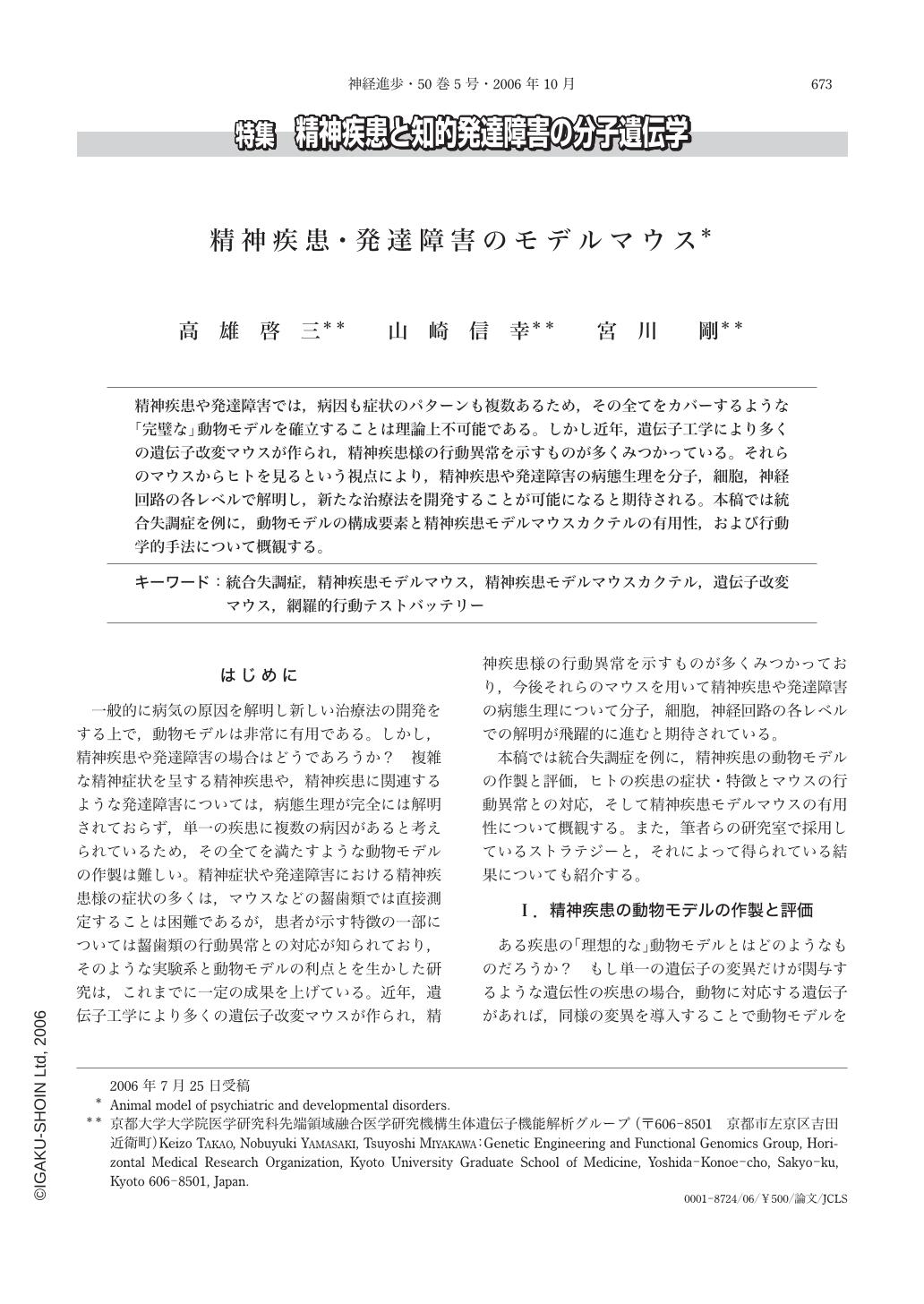Japanese
English
- 有料閲覧
- Abstract 文献概要
- 1ページ目 Look Inside
- 参考文献 Reference
精神疾患や発達障害では,病因も症状のパターンも複数あるため,その全てをカバーするような「完璧な」動物モデルを確立することは理論上不可能である。しかし近年,遺伝子工学により多くの遺伝子改変マウスが作られ,精神疾患様の行動異常を示すものが多くみつかっている。それらのマウスからヒトを見るという視点により,精神疾患や発達障害の病態生理を分子,細胞,神経回路の各レベルで解明し,新たな治療法を開発することが可能になると期待される。本稿では統合失調症を例に,動物モデルの構成要素と精神疾患モデルマウスカクテルの有用性,および行動学的手法について概観する。
Animal models are extremely useful tools in defining pathogenesis and treatment of human disease. Creating adequate animal models of complex psychiatric and developmental disorders such as schizophrenia represents a particularly difficult challenge. In the case of schizophrenia, little is certain regarding the etiology or pathophysiology of the human disease. In addition, many symptoms of the disorder are difficult to measure directly in rodents. In these days, however, many mutant mice are generated by genetic manipulations and some of them show psychiatric/abnormal behavior. It is expected that elucidating the pathophysiology of psychiatric and developmental disorders and developing a new therapy by the aspect of seeing human from those mice. In this review, we detail the features of animal models of schizophrenia and the rodent behaviors used to model certain aspects of schizophrenia. We also discuss the methodological aspects of behavioral analysis and the potential utility of “model cocktail”of psychiatric disorders.

Copyright © 2006, Igaku-Shoin Ltd. All rights reserved.


